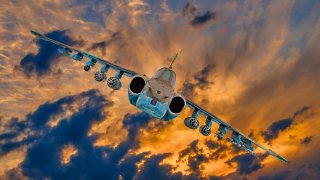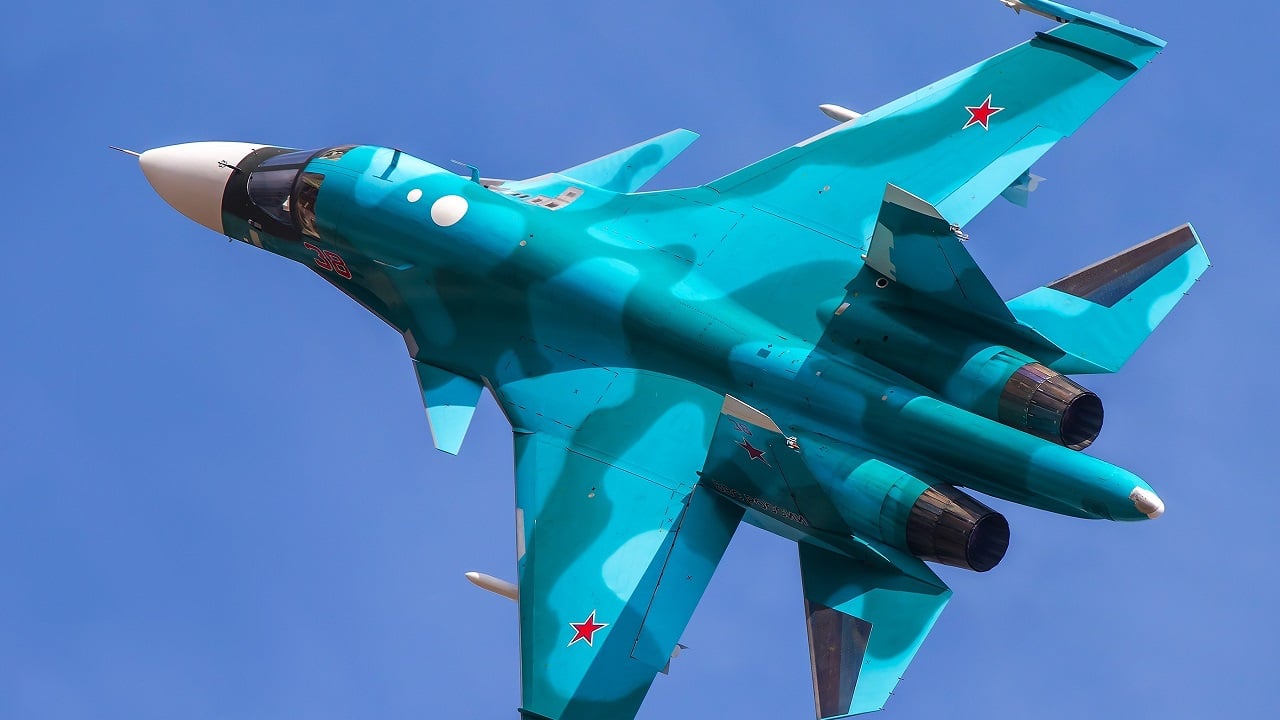Peter Suciu

Ukraine War: Russia Lost Two Jet Fighters in a Single Day – Including One Shot Down By Friendly Fire - Russia saw two of its jets lost in just 24 hours over the past weekend, including one that was reported to have been shot down by its own forces in the skies over Ukraine.
Since launching its unprovoked war against Ukraine nearly two years ago, the Russian military has seen a significant number of combat aircraft lost in the fighting. The most recent aircraft destroyed included a Sukhoi Su-34 fighter bomber that was targeted on the ground at a Russian air base in an early morning raid on Sunday. Later that same day, a Sukhoi Su-25 fighter jet was shot down over the Zaporizhia region in eastern Ukraine on Sunday per Business Insider.
Kyiv claimed it wasn't responsible for the downing of the latter aircraft.
"I can confidently state that it was not the Ukrainian air defense that shot down the Russian Su-25 attack aircraft! These were clearly the coordinated actions of Russian anti-aircraft troops, for which the entire Ukrainian people sends them great thanks!," Mykola Oleshchuk, Commander of the Air Force of the Armed Forces of Ukraine, said in a post on the social messaging app Telegram.
Russian military bloggers quickly confirmed the loss of the aircraft but said its crash was due to bad weather. That would seem dubious, especially as the aircraft is known to operate at relatively low altitudes – making it vulnerable to ground-based air defense systems. A large number of Su-25s have been shot down in the war.
Moreover, this wouldn't be the first case of Russia downing its own aircraft. It was in September that UK intelligence confirmed that the Kremlin had shot down one of its own Su-35 jets near Tokmak in eastern Ukraine.
Su-25 in the Crosshairs in Ukraine
The Sukhoi Su-25 (NATO reporting name "Frogfoot") has been described as the Soviet Air Force's answer to the United States Air Force's Fairchild Republic A-10 Thunderbolt II.
In 1969, the Kremlin launched a procurement competition for a new CAS platform. Manufacturer Sukhoi won the tender with its T-8 concept demonstrator, which was developed throughout several iterations into the Su-25 "Grach."
The Su-25 was built from a heavily armored, composite metal airframe, designed to withstand serious punishment from ground-based weapons. Not unlike the U.S. A-10 Thunderbolt II, the Su-25's cockpit features a titanium "bathtub-style" enclosure to provide the pilot with additional protection.
The twin-engine, single-seat CAS plane made its maiden flight in 1979, and it entered service with the Soviet military in 1981, just in time for the Soviet-Afghan War.
The Su-25 main armament consists of a one twin barrel 30mm gun in the bottom of its fuselage, and it typically carries around 250 rounds. The Grach is further equipped with eight pylons under the wings that can carry 4,000 kg of air-to-ground – including a selection of rockets, missiles, and bombs. This enables the aircraft to accommodate a wide variety of low-flying strike and ground support missions.
Ordnance can vary from guided and unguided heavy bombs from the KAB and FAB families, Kh-series air-to-surface missiles, and S-13/24/25 rockets, as well as a 30mm GSh-30-2 autocannon. Later Frogfoot models were given the R-73 short-range air-to-air missile, while the GSh-30-2 was upgraded with different firing modes.
At the start of the war in Ukraine roughly 180 Su-25s, including both the baseline version and its upgraded variants, were active in the Russian Air Force. According to the open-source military intelligence website Oryx, as of the end of November, a total of 17 of the CAS aircraft have been destroyed since Russia launched its unprovoked invasion in February 2022. Three of the aircraft were shot down in a single week in October 2023. The tally of lost Su-25s could now be 18!
The Su-34 – One of Russia's Most Capable Aircraft
Developed during the latter stages of the Cold War, the Sukhoi Su-34 (NATO reporting name "Fullback") took its first flight in 1990 and was originally intended for service with the Soviet Air Forces.
As with many other late Soviet-era programs, it was put on the proverbial "back burner" with the collapse of the Soviet Union and then remained in limbo during Russia’s economic crisis that followed. The program was only revived in earnest in the early 2000s, with eight pre-production aircraft built for trials and evaluations.
It formally entered service in 2014 – although there are reports that it was employed during the Russo-Georgia War of 2008. Approximately 155 have been manufactured, including the prototypes and serial-produced aircraft.
The Su-34's surface design includes a duckbill-shaped nose cone, two tail fins broadly reminiscent of the Su-27, canards to assist with maneuverability, and a side-by-side cockpit that can potentially facilitate improved communication between the two pilots.

It has since been noted to be one of Russia's most capable all-weather combat aircraft – able to conduct ground, surface, and air attacks. It had been deployed to Syria, where it was employed in attacks against rebel and ISIS forces, and could likely be used to help defend Moscow's interests in the Arctic region.
No comments:
Post a Comment